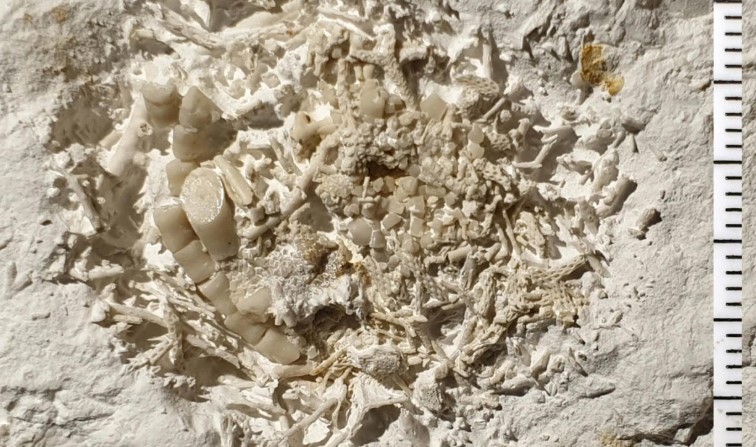Vomit is usually something people avoid, but not when it’s 66 million years old!
A fossil hunter named Peter Bennicke made a surprising discovery at the Cliffs of Stevns in Denmark. This site is famous for its rich collection of fossils. Bennicke found a fossilized lump of vomit that experts later confirmed belonged to an ancient animal.
Scientists found that the vomit contained remains of sea lilies, also known as crinoids. According to Dutch sea lily expert John Jagt, the vomit had two different species of sea lilies mixed together. It is believed that a predator ate these creatures but later threw up the parts it couldn’t digest.
Why Is This Discovery Important?
Jesper Milàn, a Danish paleontologist, said that sea lilies are not very nutritious because they are mostly made of hard calcium plates with little soft tissue. Based on research, scientists think that a fish living in the Cretaceous Sea ate the sea lilies. This ancient sea existed millions of years ago and stretched from the modern Gulf of Mexico to the Arctic Ocean.
The discovery helps researchers learn more about ancient food chains and how predators and prey interacted in the Cretaceous period. The Cliffs of Stevns, where the vomit was found, also provide evidence of the Chicxulub meteorite impact, which is believed to have caused the mass extinction of the dinosaurs around 65 million years ago.
What Happens to the Fossilized Vomit?
In Denmark, fossils of great historical importance are called “Danekræ.” This means that instead of belonging to the person who found it, the fossilized vomit is considered a national treasure. It has to be given to a museum.
The fossilized vomit will be displayed at the Geomuseum Faxe in Denmark during the winter holidays, where visitors can see this rare and unusual discovery up close.

Leave a Reply